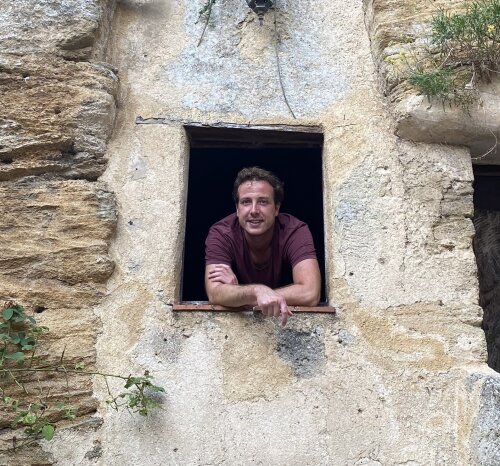The underground limestone quarries in the southeastern part of the Limburg province (Belgium) have been used for limestone (Cretaceous) extraction, storage, shelter, and for the cultivation of mushrooms. This multifunctional and frequent use has left many traces in the landscape above and underground and the quarries are an inherent part of the local culture as they are still being used. The present-day stewardship of the quarries is confronted with many challenges.
Relatively limited information is known about the underground limestone quarries in the research area, such as their exact location relative to the surface, infrastructure, and buildings. In order to inspect and monitor stability problems an exact location is necessary. Various underground quarries have been prone to collapse resulting in possible unknown areas which may still be intact. Data is collected by conducting fieldwork, 3D measurements, interviews with villagers and, researching archives, leading to a more profound knowledge and new insights of the exact location and the cultural values of the underground quarries. The main research question is: How has the underground extraction of limestone and the secondary use of the underground quarries changed the landscape, underground and above ground, and how did this influence and was this influenced by local communities?

The research project will be divided into five themes. First, a systematic inventory of man-made underground structures (underground quarries, their entrances, and often related tunnels and mines) in the research area is conducted. 3D mobile laser scanning is used to obtain precise 3D models of the underground structures and the surface. Second, the 3D data is analysed and processed to be used for mapping, protecting, and managing man-made underground structures. The third theme provides a case study of Riemst where a historical perspective and mining evolution of limestone extraction in underground quarries since the second half of the 19th century is described. The previous themes mainly address the (result of) extraction of limestone, while the rise, downfall, and importance of mushroom cultivation and its influence on the underground galleries are discussed in the fourth theme. The fifth theme aims to highlight the overarching natural and cultural values of the underground quarries and its importance in a broader scope in order to investigate if the international ‘’Krijtland’’, the area where Cretaceous limestone outcrops and has been extracted, is of international significance eligible to be classified as Unesco Geopark.
PhD student: Mike Lahaye
Promotor: Prof. Dr. Tim de Kock